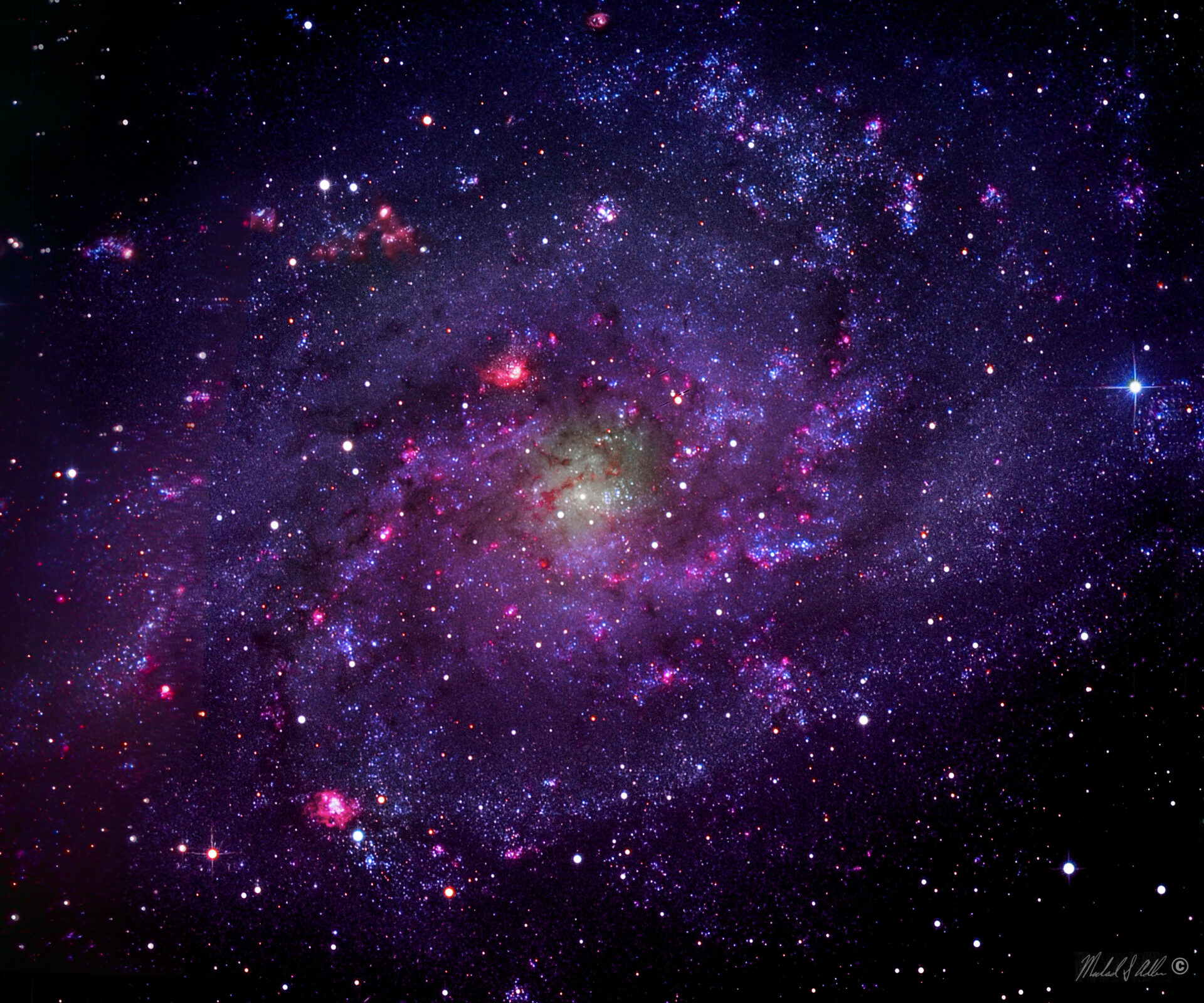Optics: 20″ Planewave CDK20
Mount: Software Bisque Paramount ME
Camera: FLI PL16803
Filters: FLI LRGB & 3nm Astrodon Ha
Dates/Times: Sept 2014, December 2021
Location: Earth and Sky Observatory, Jackson Hole WY
Exposure Details: L=45x5min & 20×10 min,1:1, R,G,B=38x5min & 20x10min, 2:2, Ha=16x10min, 4:4, total 215 images, 29hr
Acquisition: MaxImDl, SkyX, Guiding Astrodon MOAG, SBIG STi
Processing: MaximDl, Photoshop CC2022
Triangulum Galaxy Messier 33
Original price was: $65.00.$52.50Current price is: $52.50.
Triangulum Galaxy, Messier 33 The small, northern constellation Triangulum harbors this magnificent face-on spiral galaxy, M33. Its popular names include the Pinwheel Galaxy or just the Triangulum Galaxy. M33 is over 50,000 light-years in diameter, third largest in the local group of galaxies after the Andromeda Galaxy (M31), and our own Milky Way. Featured in this image are bright blue star clusters and pinkish star forming regions along the galaxy’s loosely wound spiral arms. In fact, at the lower left is the caverous NGC 604 nebula which is the one of the brightest star forming regions that is known in the local group of galaxies. NASA’s estimate says that the gas cloud has more than 200 blue stars and that it is more than 1,300 light years across — or about 100 times bigger than the Orion Nebula. If NGC 604 were at the same distance from Earth as the Orion Nebula, it would be the brightest object in the night sky (besides the moon) .Like M31, M33’s population of well-measured variable stars have helped make this nearby spiral a cosmic yardstick for establishing the distance scale of the Universe which is about 3 million light-years away from Earth. While its mass is not well understood , one estimate puts it between 10 billion and 40 billion times the sun’s mass. In the sky this image of M33 is about the size of the full moon and at a magnitude of 5.7 is at the limits of being seen with the naked eye under perfect condition. M33 is unusual for a large galaxy as it has no bright central bulge. One reason is because it does not have a massive central black hole like the Milky Way which is 4 million Solar masses. It is estimated that M33 has a 3000 Solar mass black hole. Another interesting feature of the galaxy is that individual stars can be seen in this image. All of the bright stars are from the Milky Way in the foreground but individual stars can be seen in the sparser outer arms of the galaxy, particularly at the very left of the image.


